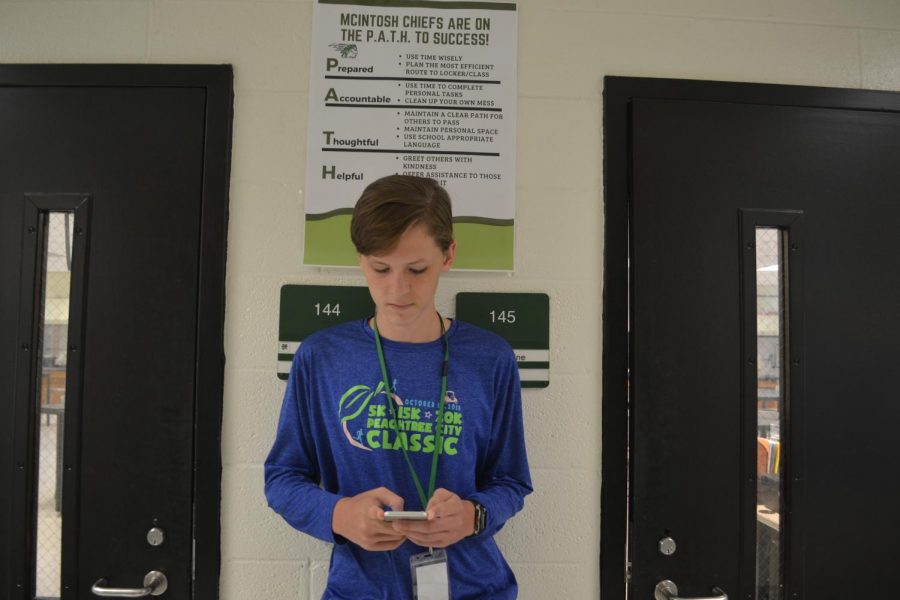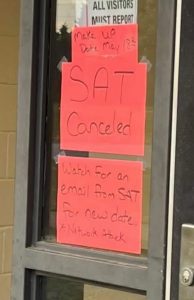The Dangers of Putting Your Phone Up: Cell Phone Jails
Sep 26, 2019
Cell phones are, needless to say, an epidemic at McIntosh. In every hallway, between each class, at every lunch period, students are glued to their cellular devices. While the administration is supposedly doing what they can to stop this technological distraction, they can’t do everything. In fact, some of the measures taken by teachers to stop this can cause more harm than good.
Art teacher at MHS, Carisa Green said, “I can’t control the phones.”
To agree with her, Corp. Judy, the school’s resource officer said “If we were to police cell phones all the time, it would be all we do.” The methods the school takes to try however, have dangers associated with them.
Green said, “I’m afraid a cell phone will get stolen.”
In response to such cell phone issues, assistant principal Keith Haber said, “the safest place for your cell phone is in your locker, locked.”
While this is true, many students at McIntosh don’t have a locker. The school, after all, is very big, and getting to your locker from anywhere with only 5 minutes between each class is almost impossible. Even if you wanted to get a locker, there is a $10 fee to rent one for the school year. Maybe more students would get a locker if the $10 fee was taken away. If the safest place for a cell phone is in your locker, then maybe free lockers could potentially help the phone epidemic.
Of course, the epidemic of cell phones at school is a big problem, and who can blame some teachers that have found a good way to control it in their classrooms. However, phone jails have become a problem with more and more students having their phones stolen. Now that McIntosh is no longer a B.Y.O.T school, cell phones are no longer needed in classrooms and around the school at all. Phone jails are a way for teachers to contain unwanted cell phone use by students.












